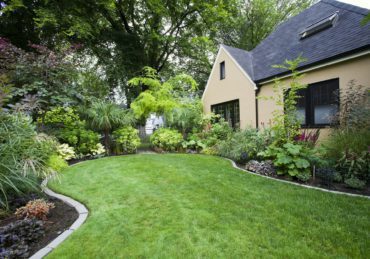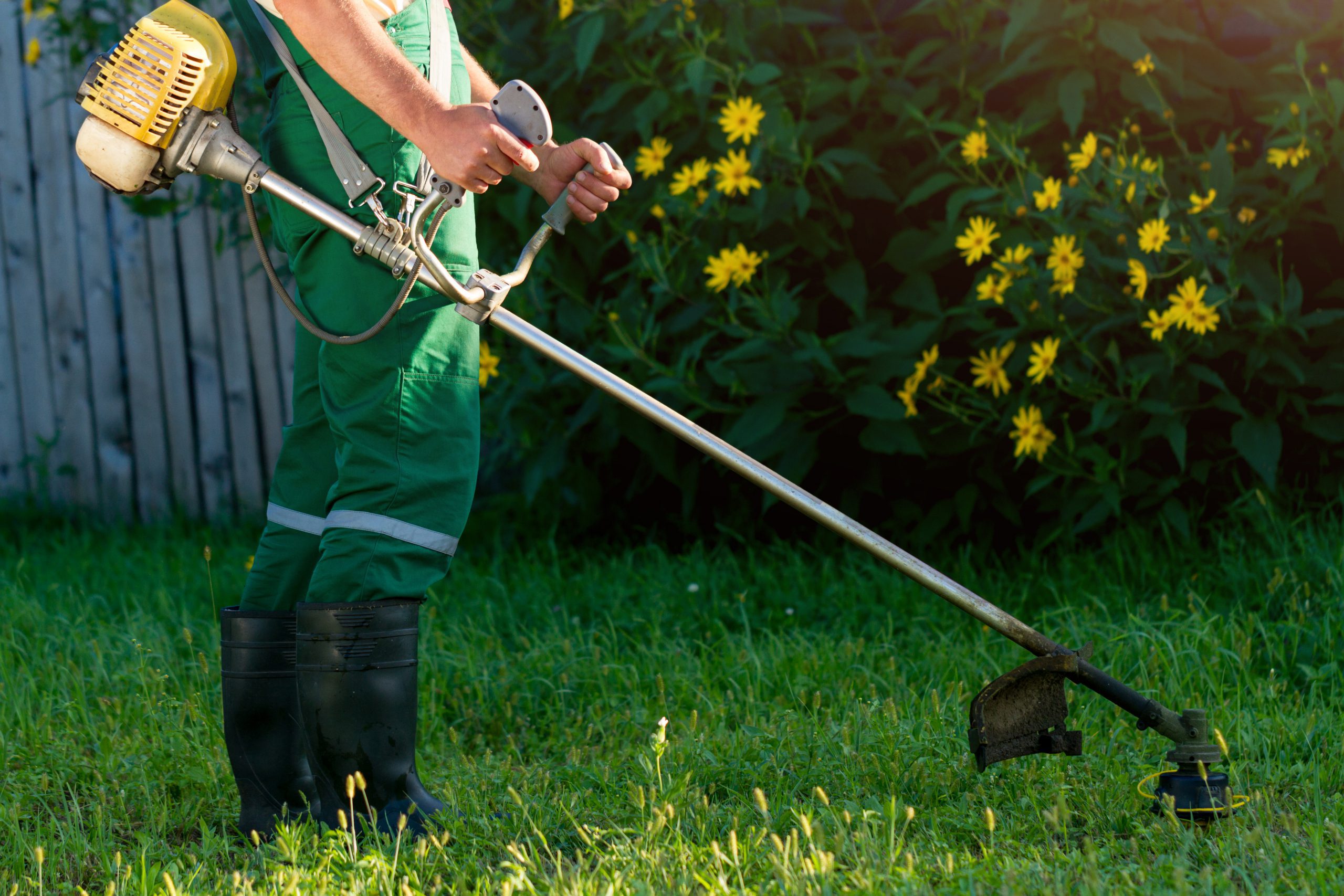For a lush Georgia lawn, consider these five grass types. Bermuda Grass is ideal for full sun and high foot traffic, offering rapid recovery and drought resistance. Zoysia Grass provides durability with excellent weed suppression and tolerates moderate shade. Centipede Grass is perfect for low-maintenance lawns, thriving in acidic soils. Tall Fescue suits shadier areas with a deep root system for drought resilience. Finally, St. Augustine Grass boasts a coarse texture and tolerates low to moderate shade but requires regular watering. Each type has unique benefits tailored to Georgia’s climate, so examine your options further to achieve best results.
Choosing the Right Grass for Your Georgia Lawn
Selecting the appropriate grass type for your Georgia lawn hinges on understanding the region’s climate and soil characteristics.
Furthermore, the intended use of the lawn, whether for recreation, aesthetics, or low maintenance—plays an essential role in this decision.
Easily hire the best lawn & landscape pros working in your neighborhood.
Understanding Georgia’s Climate and Soil
Georgia’s warm, humid subtropical climate plays an essential role in determining the most appropriate grass types for lawns across the state.
This climate is perfect for warm-season grasses, particularly when considering:
- Soil Type: Well-drained sandy or loamy soils are ideal.
- Temperature: Average summer highs reach 90°F.
- pH Levels: Ideal range is 6.0 to 6.5 for growth.
These factors guarantee a lush lawn throughout the seasons.
Lawn Use & Maintenance Needs
When considering the ideal grass type for your lawn, it is important to evaluate how the space will be used and the level of maintenance you are willing to commit.
For high-traffic areas, Bermuda and Zoysia are excellent choices, while Centipede and Tall Fescue offer low-maintenance options.
Understanding these factors will help you select the best grass for Georgia that meets your lawn maintenance needs.
1. Bermuda Grass – Best for Sun and High Traffic Areas
Bermuda grass is the premier choice for Georgia lawns due to its exceptional ability to thrive in full sunlight and withstand high foot traffic.
Its rapid growth and recovery make it particularly suited for active areas, ensuring a resilient and lush appearance.
Proper maintenance, including regular mowing and fertilization, is essential for keeping Bermuda grass healthy and vibrant throughout the growing season.
Why Bermuda Grass Works in Georgia
As one of the premier options for lawns in the southeastern United States, Bermuda grass excels in the warm climate of Georgia, thriving under full sunlight with a requirement of at least eight hours of direct sun exposure each day.
Its benefits include:
- Rapid establishment and recovery from wear
- Excellent drought resistance
- Ideal for high-traffic areas
These attributes make Bermuda grass a top choice for Georgia lawns.
Maintenance Tips
To maintain a lush and healthy Bermuda grass lawn, consistent care and attention to specific maintenance practices are essential.
This grass requires full sunlight and regular mowing at a height of 1 to 1.5 inches.
Furthermore, fertilization during the growing season and consistent watering, especially in dry periods, will promote vigorous growth and enhance drought resistance, ensuring your lawn remains vibrant.
2. Zoysia Grass – Durable and Low-Maintenance
Zoysia grass is an excellent choice for Georgia lawns due to its durability and low-maintenance characteristics.
Thriving in warm, sunny conditions while also tolerating light shade, Zoysia develops a dense, carpet-like lawn that enhances drought resistance and weed suppression.
Understanding its specific lawn care needs can help homeowners maximize its benefits while ensuring a healthy, vibrant landscape.
Benefits of Zoysia in a Georgia Lawn
While many grass types can flourish in Georgia, Zoysia stands out for its durability and low-maintenance requirements.
The benefits of Zoysia grass include:
- Dense Growth: Provides excellent weed suppression and a soft texture.
- Drought Resistance: Deep roots allow it to endure low moisture.
- Adaptability: Thrives in various soil types and tolerates moderate shade.
Zoysia is truly a versatile, low-maintenance grass choice.
Easily hire the best lawn & landscape pros working in your neighborhood.
Lawn Care Needs
Maintaining a lush and vibrant lawn requires an understanding of the specific care needs associated with each grass type.
Zoysia grass, known for its durability, needs about 6-8 hours of sunlight daily and can withstand moderate foot traffic. Its deep roots enhance drought resistance, reducing watering frequency.
Furthermore, its dense growth habit naturally suppresses weeds, simplifying lawn care and promoting a healthier environment.
3. Centipede Grass – Ideal for Low-Maintenance Lawns
Centipede grass, often referred to as “lazy man’s grass,” is an excellent choice for homeowners seeking a low-maintenance lawn.
This grass thrives in acidic soils and requires minimal fertilization, making it easy to care for while maintaining its distinct yellowish-green hue.
Best suited for low-use residential lawns, centipede grass tolerates moderate foot traffic and offers good drought resistance, highlighting its practicality for various settings.
Features of Centipede Grass
For homeowners seeking a low-maintenance lawn, Centipede grass stands out as an excellent option.
Its features include:
- Minimal fertilization needs, thriving in acidic soils (pH 5.0-6.0).
- Unique yellowish-green color, enhancing lawn aesthetics.
- Adaptability to partial shade, although it is not ideal for heavy foot traffic.
These characteristics make Centipede grass a practical choice for a hassle-free lawn experience.
Best Uses
While homeowners often seek a lush, vibrant lawn, many prefer a low-maintenance solution that still looks appealing.
Centipede grass is considered one of the best grass types for such needs. Thriving in various soil conditions, it requires minimal fertilization and has a slow growth rate, resulting in less frequent mowing.
Ideal for low-traffic areas, it offers an attractive, hassle-free lawn experience.
4. Tall Fescue – Perfect for Shady and Cooler Areas
Tall Fescue is an excellent choice for lawns in Georgia’s shaded and cooler areas, offering a deep root system that enhances drought resistance.
Its adaptability to both sun and shade makes it versatile for various landscape conditions, while its fine texture and rich color contribute to an attractive lawn.
However, maintaining Tall Fescue requires regular watering during the summer months and a commitment to moderate upkeep.
Easily hire the best lawn & landscape pros working in your neighborhood.
Advantages of Tall Fescue
Embracing the unique climate of Georgia, Tall Fescue stands out as an exceptional choice for lawns in shaded and cooler areas.
The advantages of tall fescue grass include:
- Drought Resistance: Its deep root system guarantees resilience during drought conditions.
- Attractive Appearance: Fine texture and rich color enhance lawn aesthetics.
- Low Maintenance: This grass requires moderate care and has low disease susceptibility.
Considerations
When selecting grass types for shaded and cooler areas in Georgia, it is essential to recognize the unique benefits of Tall Fescue.
Key considerations include its adaptability to moderate shade and its robust deep root system, which enhances drought resistance.
Regular watering during dry spells is vital to maintain its lush appearance and health, making it an ideal choice for diverse lawn conditions.
5. St. Augustine Grass – Coarse-Textured and Heat-Tolerant
St. Augustine grass is a favored choice for homeowners in coastal and southern Georgia due to its lush appearance and ability to thrive in warm, humid conditions.
Its coarse texture and broad blades create an attractive lawn, while its heat tolerance makes it particularly suitable for the region’s climate.
However, proper lawn care, including regular watering and appropriate mowing height, is essential to maintain its vibrant health and appearance.
Why It’s Popular in Coastal & Southern Georgia
Often regarded as the go-to choice for homeowners in coastal and southern Georgia, St. Augustine grass thrives due to its unique characteristics:
- Heat and Humidity Tolerance: Perfect for the subtropical climate.
- Salt Resistance: Ideal for coastal areas with saline conditions.
- Lush Appearance: Coarse texture and shade tolerance enhance visual appeal.
These traits make St. Augustine grass a favored option for creating beautiful lawns in the region.
Lawn Care Requirements
Due to its favorable characteristics, St. Augustine Grass has specific lawn care requirements important for maintaining its lush appearance.
This coarse-textured grass type thrives in full sunlight but tolerates low to moderate shade. Regular watering during dry spells and ideal mowing at 3.5 to 4 inches are essential.
Furthermore, monitoring for diseases like gray leaf spot guarantees its health and vigor throughout the growing season.
How to Choose the Right Grass Type in Georgia
Choosing the right grass type in Georgia requires careful consideration of location, sun exposure, and soil conditions.
Northern areas may benefit from cool-season grasses like Fescue, while southern regions thrive with warm-season options such as Bermuda and Zoysia.
Furthermore, evaluating shade levels and soil pH will help guarantee a healthy and vibrant lawn tailored to specific environmental factors.
Location Matters – North vs. South Georgia
When selecting the right grass type for a lawn in Georgia, understanding the regional differences between North and South Georgia is essential.
Consider the following:
- North Georgia: Favor tall fescue for its adaptability and shade tolerance.
- South Georgia: Opt for warm-season grasses like Bermuda and Zoysia that thrive in heat.
- Soil Type: Centipede is ideal for acidic soils prevalent in South Georgia.
Shade, Sun, and Soil Factors
Understanding the specific environmental conditions of your lawn is essential for selecting the appropriate grass type in Georgia.
Consider the sun exposure; warm-season grasses like Bermuda and Zoysia thrive in full sun, while Centipede tolerates partial shade.
Soil quality also matters—most grasses prefer well-drained soils with a pH of 6.0 to 6.5, with Centipede favoring slightly acidic conditions for ideal growth.
Need Help Picking the Best Grass? Try LawnGuru!
Are you struggling to determine the best grass type for your Georgia lawn?
LawnGuru can help simplify your decision-making process by offering expert insights tailored to your specific conditions.
Our professionals focus on:
- Evaluating sunlight and soil type
- Recommending suitable grass for your Georgia
- Providing maintenance advice for local lawn care
Enjoy a lush lawn without the stress of trial and error.




